iPhone 5: review of specifications
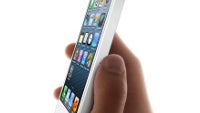
So, it's finally here, the new iPhone! Sorry, we meant the iPhone 5! You've ready all our news about the handset (probably a rather time-consuming thing to do), you already know that Apple has not only improved the design of its handset, but also the hardware found under the hood. This is the article where we'll review the new specs of the device and see how they stack up against the competition.
However, there are some things we have to point out right from the start. When we're doing "cross-platform" hardware comparisons, '2' no longer means more than '1'. In other words, while 1GB of RAM may be insufficient for a certain OS to run smoothly, it might be just enough for another. That's why specs of phones running different operating systems shouldn't be compared directly. With that said, let's see what new hardware goodies the iPhone 5 has brought!
Design [ taller, thinner, different ]
The iPhone 5 comes with an all-new design! Well, not exactly, but it's been vastly altered. This is the first iPhone with a screen bigger than 3.5 inches and that has caused a change in the device's dimensions. With a new widescreen 16:9 screen, the iPhone 5 has become 4.87" (123.8mm) tall. The width of the device is unchanged - 2.31" (58.6mm). However, the manufacturer has done its best to make the device thinner, and the result is actually pretty impressive. The iPhone 5 is just 0.30" (7.6mm) thin! That's quite an improvement compared to the iPhone 4S's thickness of 9.3mm. Obviously, this also makes it one of the thinnest smartphones around.
Overall, the front side of the device looks pretty similar to what we had before. However, the back side is where most of the change has occurred. It is no longer all-glass, but is mostly made of aluminum, with two pieces of glass used for its upper and lower ends. This design is quite funky, although it might take some getting used to. Whether it'll be a mass success or not is obviously too early to be said, but we can be absolutely certain that this thing will feel awesome in the hand, due to the premium materials used and precise, quality construction.
Screen [ 4-inch, 640x1136 pixels, 326 ppi ]
OK, the change made to the screen is BIG. The significance of this change is probably bigger than the change itself, though. This is the first iPhone with a screen size different than 3.5". The new screen measures 4 inches and has a resolution of 640x1136 pixels, which results in an aspect ratio of 16:9. Obviously, Apple isn't trying to compete with gargantuan Android handsets of today. The company stays true to producing high-end devices for the masses, and that's why it wanted to keep the phone as compact as possible. Still, Apple has recognized the fact that smartphones pack a lot of power and functionality these days, and are used for all kinds of stuff, so a decent display size bump has been made in order to improve the overall user experience, without making the phone unwieldy even for people with smaller hands.
Of course, the iPhone is not the smartphone for the power/geek type of user anymore. There are now much more suitable offerings in this are like the Galaxy S III or One X, which feature much bigger screens, allowing users to almost leave their computers behind, without suffering serious eye-fatigue. For the regular customers, though, who would use their handsets much more lightly, the iPhone 5, with its 4" display, seems like the more appropriate solution.
Processor and Memory [ A6 SoC, 2x performance ]
Besides an "all-new" design, the iPhone 5 comes with a new system-on-a-chip as well. The A6, as it is called, is said to have a 2x faster CPU and 2x faster GPU compared to the A5 found in the iPhone 4S. However, Apple has not announced the exact number of CPU cores, or at what frequencies they are clocked at. For those of us who know Apple, though, it's somewhat obvious that the CPU will be a dual-core solution.
Here's the best moment to remind our readers of what we wrote in the beginning of this post - that having technically inferior hardware doesn't always translate to a poorer user experience when doing cross-platform comparisons. In this case, we can be sure that the iPhone 5 will rival, or be even faster than the competition, due to the extremely well-optimized iOS platform.
The situation with the amount of RAM is pretty much the same, meaning that we know nothing. We expect it to be 1GB, though, which will ensure the smooth operation of the OS and third-party applications.
The iPhone 5 will once again be offered in 16GB, 32GB and 64GB variants, costing $199, $299 and $399 on contract, respectively. Those who hoped for expandable storage are out of luck... as always.
Connectivity [ LTE, LTE, LTE ]
LTE! Yes, Apple has finally added support for the newest and greatest commercial network standard, just as the LTE networks around the world have started to mature. The cellular modem inside the iPhone 5 is capable of the whooping theoretical download speeds of 100 Mbit/s on LTE, but the HSPA+ support has also been improved considerably. It will now go as high as 42.2 Mbit/s on the downlink!
Naturally, you can expect the iPhone 5 to run on LTE with pretty much every carrier which has such a network, including AT&T, Verizon and Sprint in the US, and EE in the UK.
And since this is a major update, the Wi-Fi radio hasn't been neglected. It will now support the 5GHz band, which should provide better speeds, as this band is much newer and clearer. The other recently announced devices that have this feature are the Amazon Kindle Fire HDs, the 7" of which is coming out on September 14.
Battery [ 8-hour talk-time, 9.4-day stand-by ]
Well, not much has been said about the battery of the iPhone 5, and that's probably because there's not much to say about it. It isn't yet known what capacity it's going to have, but what matters most — the length of the battery life — has been revealed.
The iPhone 5 should have a talk-time of 8 hours on 3G, while pure stand-by is promised to be 9.4 days. Aside from that, the battery should also allow for up to 8 hours of 3G/LTE use, 10 hours of Wi-Fi internet use, video playback of up to 10 hours and audio playback of up to 40 hours, which is very good.
Camera [ 8MP, less noise, panorama ]
The so-called iSight camera has experienced a more modest upgrade. It's still 8MP, but the new A6 chip comes with a better image processor, which is promised to get rid of noise more efficiently. This feature is called Spatial noise reduction. In addition the camera will be even faster, and its low-light performance is said to have been improved as well. A new software feature, called "Panorama" will let you take... panoramic shots. While this is nothing new, we're excited to see how Apple has implemented it. Knowing Apple, it should be very easy to use, all the while producing some pretty impressive results. Oh, and by the way, the front-facing camera will now support HD resolutions, which means HD video calls!
The 1080p, 30fps video recordings made with the iPhone 5 should benefit from better video stabilization and clearer audio, due to the better microphone system. Not much of an improvement, we know, but Apple's probably saving the big camera features for next year, when we'll presumably see the same design, but upgraded internals.
Software [ iOS 6 ]
If there was one thing that was clear from the beginning, that was the fact that the iPhone 5 will come with iOS 6 out of the box. Although the long-anticipated visual overhaul is yet to be made by Apple, iOS 6 will bring a number of cool new features, which will improve and enrich the user experience. This includes a smarter Siri (sports, movies, restaurant information), Facebook integration, an all-new Maps application with cool Flyover 3D view and turn-by-turn navigation, full-screen mode in Safari, FaceTime over cellular networks and more.
As you probably know, iOS 6 will also come as an update to the iPhone 4S, 4 and even the 3GS, although there will be some features that won't be supported. The iOS 6 update will be pushed on September 19.
Release date and price [ September 21, $199 ]
It's great to be able to have a product soon after its official announcement, and this is exactly what Apple is doing. Preorder will go live on Friday, September 14, and the device itself will ship on September 21 in the US and some other markets. More countries will be blessed with the iPhone 5 goodness a bit later, on September 28.
As usual, the phone will cost $199, $299 or $399 on contract for its 16GB, 32GB or 64GB versions, respectively, while the older models will be discounted in order to compete at the lower price-points. The iPhone 4S 16GB will be sold for $99, and the iPhone 4 will be available for free on contract, which is simply killer pricing for what you get.
The iPhone 5 comes with an all-new design! Well, not exactly, but it's been vastly altered. This is the first iPhone with a screen bigger than 3.5 inches and that has caused a change in the device's dimensions. With a new widescreen 16:9 screen, the iPhone 5 has become 4.87" (123.8mm) tall. The width of the device is unchanged - 2.31" (58.6mm). However, the manufacturer has done its best to make the device thinner, and the result is actually pretty impressive. The iPhone 5 is just 0.30" (7.6mm) thin! That's quite an improvement compared to the iPhone 4S's thickness of 9.3mm. Obviously, this also makes it one of the thinnest smartphones around.
Overall, the front side of the device looks pretty similar to what we had before. However, the back side is where most of the change has occurred. It is no longer all-glass, but is mostly made of aluminum, with two pieces of glass used for its upper and lower ends. This design is quite funky, although it might take some getting used to. Whether it'll be a mass success or not is obviously too early to be said, but we can be absolutely certain that this thing will feel awesome in the hand, due to the premium materials used and precise, quality construction.
OK, the change made to the screen is BIG. The significance of this change is probably bigger than the change itself, though. This is the first iPhone with a screen size different than 3.5". The new screen measures 4 inches and has a resolution of 640x1136 pixels, which results in an aspect ratio of 16:9. Obviously, Apple isn't trying to compete with gargantuan Android handsets of today. The company stays true to producing high-end devices for the masses, and that's why it wanted to keep the phone as compact as possible. Still, Apple has recognized the fact that smartphones pack a lot of power and functionality these days, and are used for all kinds of stuff, so a decent display size bump has been made in order to improve the overall user experience, without making the phone unwieldy even for people with smaller hands.
Of course, the iPhone is not the smartphone for the power/geek type of user anymore. There are now much more suitable offerings in this are like the Galaxy S III or One X, which feature much bigger screens, allowing users to almost leave their computers behind, without suffering serious eye-fatigue. For the regular customers, though, who would use their handsets much more lightly, the iPhone 5, with its 4" display, seems like the more appropriate solution.
The increase in vertical resolution has also allowed Apple to keep the pixel density very high, at 326 ppi, so everything on the screen will appear crystal-clear. In comparison, the Galaxy S III's screen has pixel density of 306 ppi. Another improvements with regards to the screen is in the color saturation field, as the new display is said to be 44% more saturated! This should make viewing photos and watching video even more enjoyable. Still the color balance should be much more natural than what's observed with AMOLED screens. Due to the new in-cell touch technology used, the touch sensors of the display are now built right into the LCD panel, which should allow for better visibility. Having a more easily readable display under bright daylight would certainly be cool, however, we'll have to test the device personally first, before we can draw any final conclusions.
Processor and Memory [ A6 SoC, 2x performance ]
Besides an "all-new" design, the iPhone 5 comes with a new system-on-a-chip as well. The A6, as it is called, is said to have a 2x faster CPU and 2x faster GPU compared to the A5 found in the iPhone 4S. However, Apple has not announced the exact number of CPU cores, or at what frequencies they are clocked at. For those of us who know Apple, though, it's somewhat obvious that the CPU will be a dual-core solution.
The situation with the amount of RAM is pretty much the same, meaning that we know nothing. We expect it to be 1GB, though, which will ensure the smooth operation of the OS and third-party applications.
The iPhone 5 will once again be offered in 16GB, 32GB and 64GB variants, costing $199, $299 and $399 on contract, respectively. Those who hoped for expandable storage are out of luck... as always.
Connectivity [ LTE, LTE, LTE ]
LTE! Yes, Apple has finally added support for the newest and greatest commercial network standard, just as the LTE networks around the world have started to mature. The cellular modem inside the iPhone 5 is capable of the whooping theoretical download speeds of 100 Mbit/s on LTE, but the HSPA+ support has also been improved considerably. It will now go as high as 42.2 Mbit/s on the downlink!
Naturally, you can expect the iPhone 5 to run on LTE with pretty much every carrier which has such a network, including AT&T, Verizon and Sprint in the US, and EE in the UK.
Battery [ 8-hour talk-time, 9.4-day stand-by ]
Well, not much has been said about the battery of the iPhone 5, and that's probably because there's not much to say about it. It isn't yet known what capacity it's going to have, but what matters most — the length of the battery life — has been revealed.
The iPhone 5 should have a talk-time of 8 hours on 3G, while pure stand-by is promised to be 9.4 days. Aside from that, the battery should also allow for up to 8 hours of 3G/LTE use, 10 hours of Wi-Fi internet use, video playback of up to 10 hours and audio playback of up to 40 hours, which is very good.
Camera [ 8MP, less noise, panorama ]
The so-called iSight camera has experienced a more modest upgrade. It's still 8MP, but the new A6 chip comes with a better image processor, which is promised to get rid of noise more efficiently. This feature is called Spatial noise reduction. In addition the camera will be even faster, and its low-light performance is said to have been improved as well. A new software feature, called "Panorama" will let you take... panoramic shots. While this is nothing new, we're excited to see how Apple has implemented it. Knowing Apple, it should be very easy to use, all the while producing some pretty impressive results. Oh, and by the way, the front-facing camera will now support HD resolutions, which means HD video calls!
Software [ iOS 6 ]
If there was one thing that was clear from the beginning, that was the fact that the iPhone 5 will come with iOS 6 out of the box. Although the long-anticipated visual overhaul is yet to be made by Apple, iOS 6 will bring a number of cool new features, which will improve and enrich the user experience. This includes a smarter Siri (sports, movies, restaurant information), Facebook integration, an all-new Maps application with cool Flyover 3D view and turn-by-turn navigation, full-screen mode in Safari, FaceTime over cellular networks and more.
As you probably know, iOS 6 will also come as an update to the iPhone 4S, 4 and even the 3GS, although there will be some features that won't be supported. The iOS 6 update will be pushed on September 19.
Release date and price [ September 21, $199 ]
It's great to be able to have a product soon after its official announcement, and this is exactly what Apple is doing. Preorder will go live on Friday, September 14, and the device itself will ship on September 21 in the US and some other markets. More countries will be blessed with the iPhone 5 goodness a bit later, on September 28.
Follow us on Google News

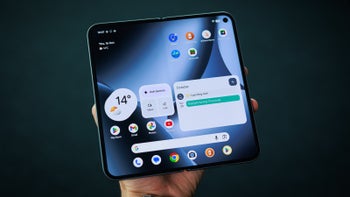
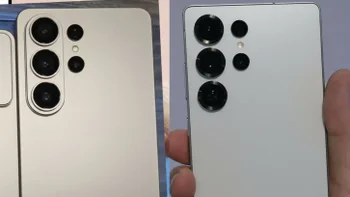
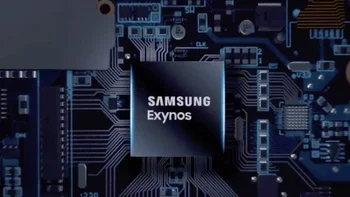
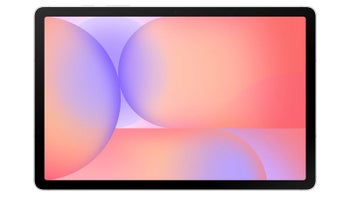
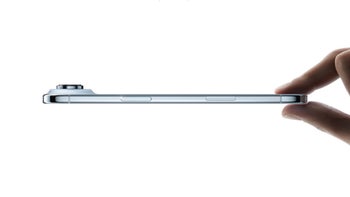
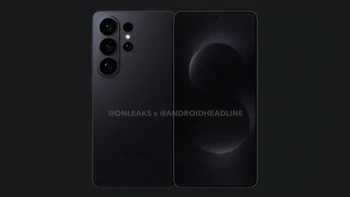
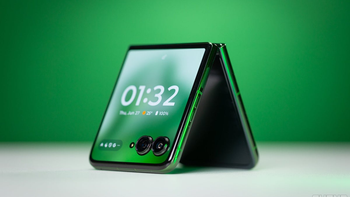
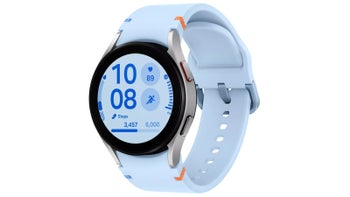
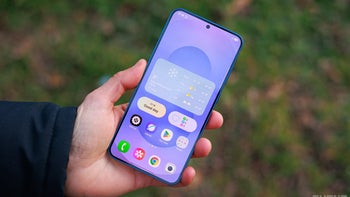


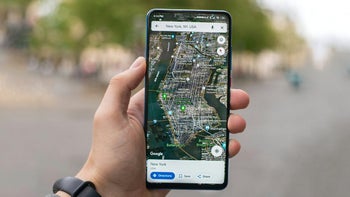
Things that are NOT allowed:
To help keep our community safe and free from spam, we apply temporary limits to newly created accounts: